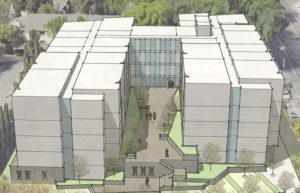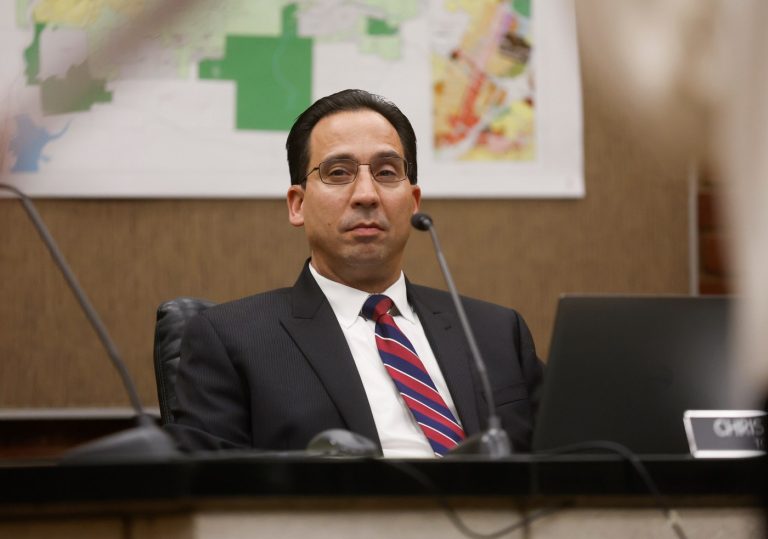Gov. Gavin Newsom is surely celebrating the passage of Proposition 1, which will allocate $6.4 billion to build 10,000 new beds for people with mental illness statewide. But the ballot proposition’s razor-thin margin — despite lopsided spending on the “Yes” campaign — shows that California voters are growing skeptical of expensive initiatives to address homelessness.
To show results, the state needs a new strategy. That begins with a more critical look at what kind of “beds” we actually need.
The challenge of getting very sick people into intensive treatment in California is undeniable. In hundreds of interviews with clinicians and dozens of ride-alongs with first responders, I’ve seen how a scarcity of programs leads to a war-like system of triage. I listened to one social worker plead with hospital administration for a “miracle” — specifically, getting an approval to keep a homeless, pregnant woman struggling with schizophrenia and fentanyl addiction in the hospital for one night.
Given this, it would seem like Prop. 1’s investments should go toward psychiatric hospitals, which are enormously expensive facilities that cost $1,500 per day, per patient. But this would misdiagnose the problem. When we add up all the locked mental health beds in California, it has as many per capita as Denmark and Australia, and more than Sweden, Canada or the U.K.
The problem is that many of California’s psychiatric beds are used badly, stranding patients at the wrong level of care and limiting the opportunities for others to advance through the system.
For example, in many county hospitals — public facilities at the frontlines of caring for homeless people with mental illness — as much as three-quarters of beds are occupied by people who don’t meet medical criteria to be in a hospital. Instead, they’re living there because there’s nowhere to discharge them.
The results are catastrophic. In San Francisco, the city pays $21 million a year to house stabilized patients in its hospital. County patients wind up in mechanical restraints at high rates, partly because of their frustration at being locked in for months or years.
Meanwhile, emergency rooms downstairs overflow with patients, nearly all of whom will be sent back on the streets.
Numerous analyses have suggested that California invest, instead, in locked, sub-acute facilities. But these have their own problems. Despite costing hundreds of dollars per day, in some programs patients only see a psychiatrist once a month. The most recent evaluation of this level of care — published in 2005 — found that half of patients were back in a locked facility within the year.
And here, too, many patients linger far too long because they’re not ready to go to the largely unstructured housing options available to them in the community, like a hotel room or homeless shelter.
To address this “human logjam” of people stuck in inappropriate levels of care, the state needs to fill out the missing middle of its continuum. Intensive, unlocked residential programs focus not just on treatment but teaching residents the skills to manage substance use and meet their basic needs independently.
Related Articles
How do wildfires affect mental health? A new study examines the connection
San Mateo County to commit $1 million to fight loneliness
California jails are holding thousands fewer people, but far more are dying in them
Daniel Kahneman dies; Nobel-winning psychologist, author of ‘Thinking, Fast and Slow’
Why did more than 1,000 people die in the US after police subdued them with force that isn’t meant to kill?
To make these investments work, the state needs to do more than just pay for new beds. It needs to change how people get into them.
Currently, a lack of regulation means California’s 58 counties bid against each other for beds in these private, mostly for-profit programs. Given the immense demand, facility operators can pick and choose their clients, opting not to admit people with serious comorbid medical needs or a criminal justice history.
The state needs to end its hands-off approach and set clear guidelines so new beds are allocated to the neediest clients, not those from counties that pay more.
Despite Prop. 1’s passage, support for bold moves to address the state’s intertwined crises is dwindling. Fortunately, Newsom has an opportunity to simultaneously address civil liberties concerns, cost-conscious taxpayers and compassion for those suffering on the streets: make space in intensive settings for those who need it by getting those who don’t into more appropriate levels of care.
Alex Barnard is an assistant professor of sociology at New York University. He wrote this column for CalMatters.












